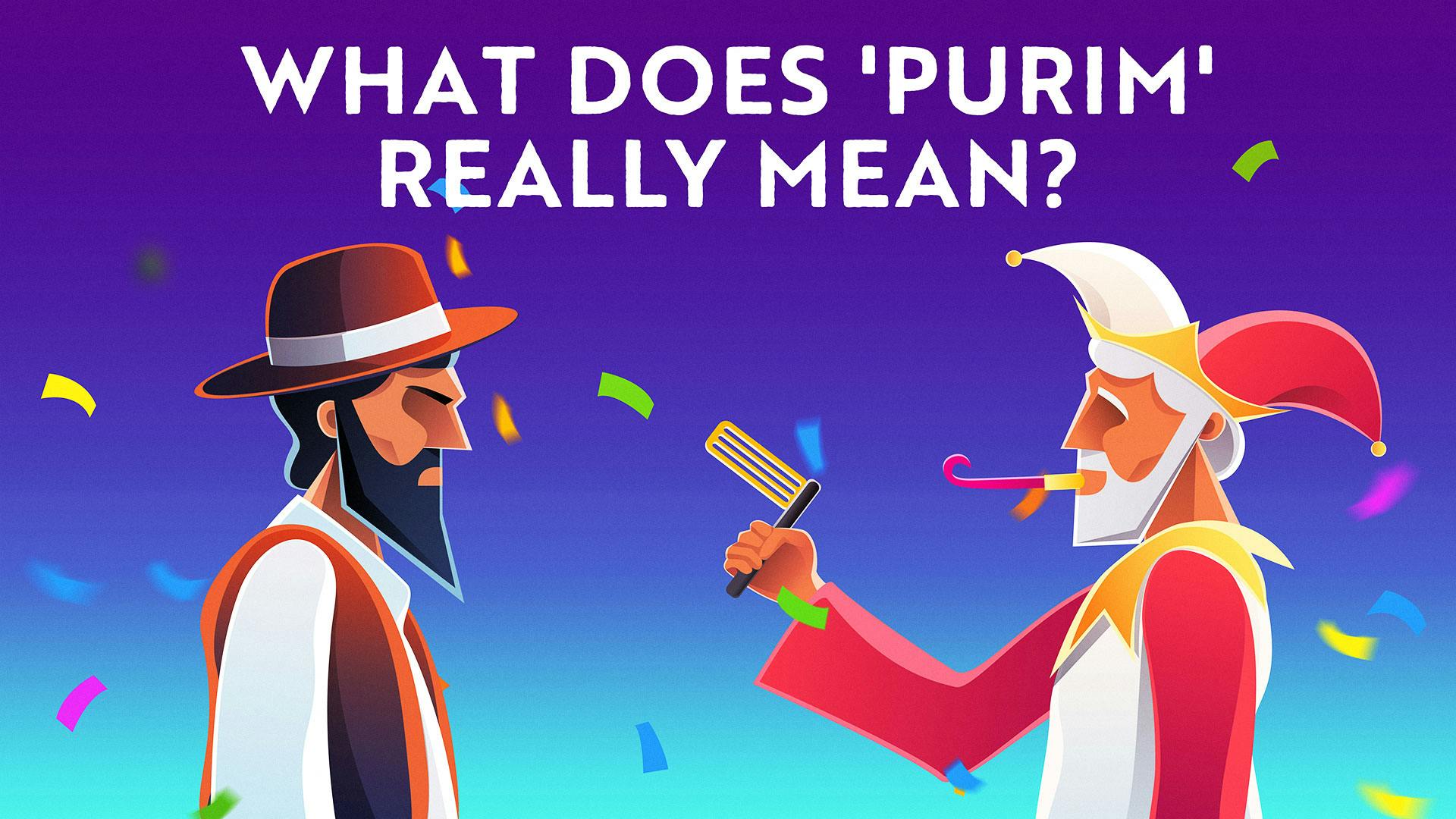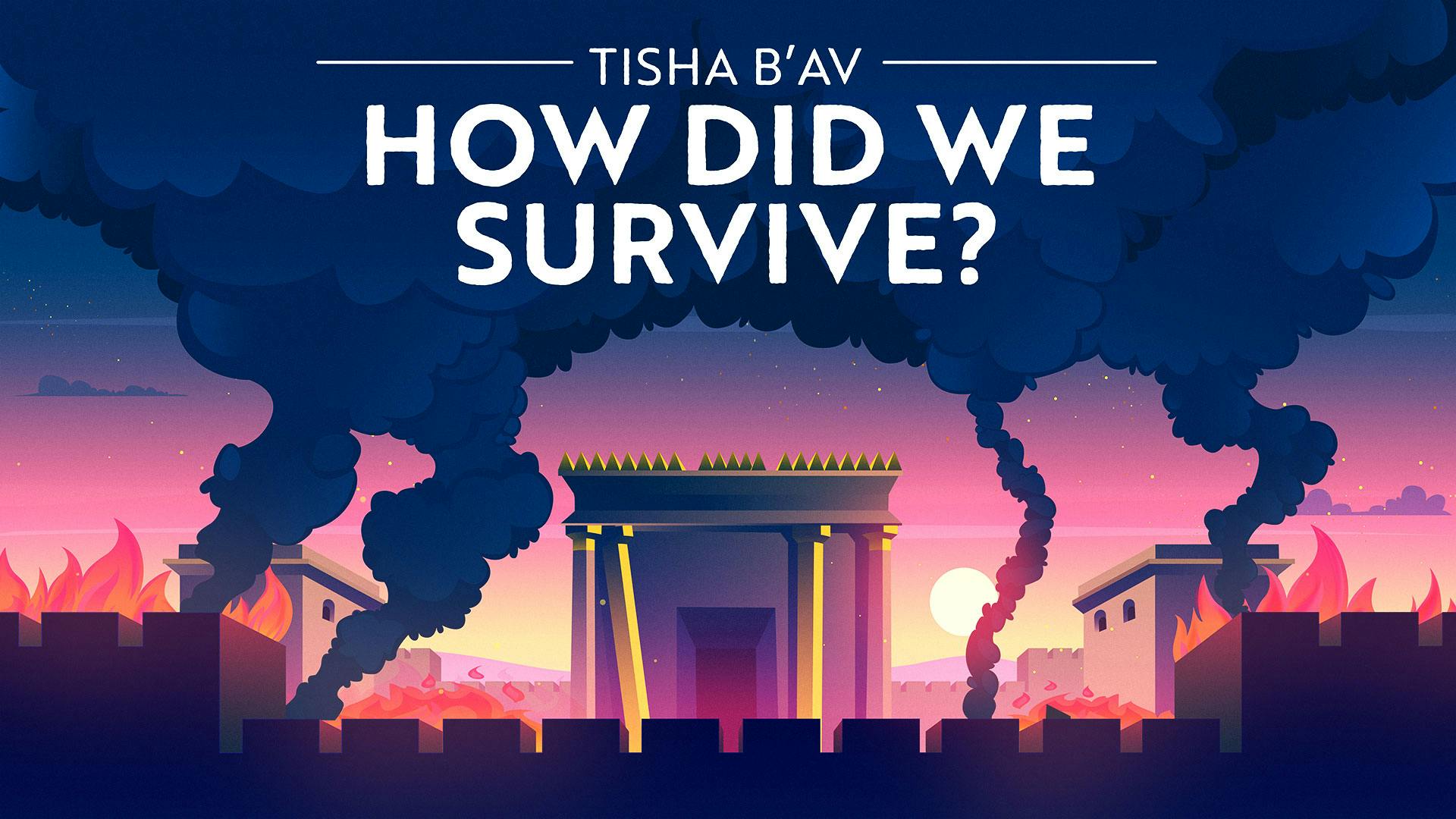Gemara for Tisha B’Av—Explanation and Inspiration
Exploring Stories of Tragedy and Reflection
BY Sarah Rashba | August 7, 2024 | 5 Minute Read

Introduction
On Tisha B'Av, there are many prohibitions meant to create a sense of mourning, such as refraining from eating, drinking, and bathing. Additionally, our rabbis teach that we are prohibited from learning Torah on this day, whether it is Chumash, Navi, Mishna, Gemara, or Halacha. The Sages recognized that learning Torah brings joy, and they instituted this prohibition, as engaging in such joyous activity runs contrary to the somber spirit of Tisha B'Av.
However, there are some exceptions to this rule. Sources that deal with mourning, loss, or the tragedy of the Temple's destruction are permissible to learn, as they enhance the spirit of mourning and help us feel the tragedy more deeply. This includes the books of Eicha (Lamentations), Iyov (Job), and the sorrowful parts of Yirmiyahu (Jeremiah). Additionally, the Shulchan Aruch (Orach Chaim 554:2) suggests studying specific sections of the Gemara on Tisha B'Av: the third perek of Moed Katan, which discusses the laws of mourning, and the stories about the destruction of the Temple found in the fifth perek of Gittin (55b-58a).
This article provides a brief overview of the various stories in Gittin about the destruction of the Beit Hamikdash. It also includes links to videos and podcasts that offer meaningful, insightful, and inspiring ways to engage with these Gemara stories on Tisha B'Av.
Gemara #1: Kamtza and Bar Kamtza
The Gemara (Gittin 55b) attributes the destruction of the Beit Hamikdash to this tragic story of hatred between fellow Jews. Below is a brief summary as well as the full text of the Gemara and resources to dive deeper.
Brief Summary of the Story
In the times of the second Beit Hamikdash, there was once a man making a large feast. He invited several guests, including the great sages of the time. He asked his servant to deliver an invitation to his friend Kamtza. The servant went to carry out his mission, but he accidentally delivered the invitation to the wrong person. Instead of delivering it to the host’s good friend, Kamtza, the servant delivered the invitation to the host’s sworn enemy, Bar Kamtza.
Bar Kamtza accepted the invitation and joined the party. When the host saw his sworn enemy at the feast, he was enraged. The host told Bar Kamtza to leave immediately. Bar Kamtza pleaded to stay, and even offered to pay for his meal. When the host refused, Bar Kamtza offered to pay for half the feast, but that, too, was refused, so Bar Kamtza offered to pay for the entire feast. The host, however, wouldn’t tolerate Bar Kamtza’s presence and picked him up and threw him out of the party.
This incident left Bar Kamtza feeling enraged, and he wasn’t just upset with the host himself, who threw him out. Among the guests at the feast were a number of sages. Bar Kamtza felt a tremendous sense of indignation towards these sages who witnessed his humiliation and did not intervene. Seeking to take revenge,Bar Kamtza went to the Roman authorities and falsely reported that the Jews were planning to rebel. As proof to this rumor, he suggested that the Romans send an animal to be offered in the Beit Hamikdash. But Bar Kamtza secretly put a blemish on the Romans’ offering so that the Jews would not be able to offer it in the Beit Hamikdash. When the Romans heard that their offering had been refused, they sent an army to attack Jerusalem and, ultimately, destroy the Beit Hamikdash.
Full Gemara (Gittin 55b-56a)
(text and translation are adapted from Sefaria)

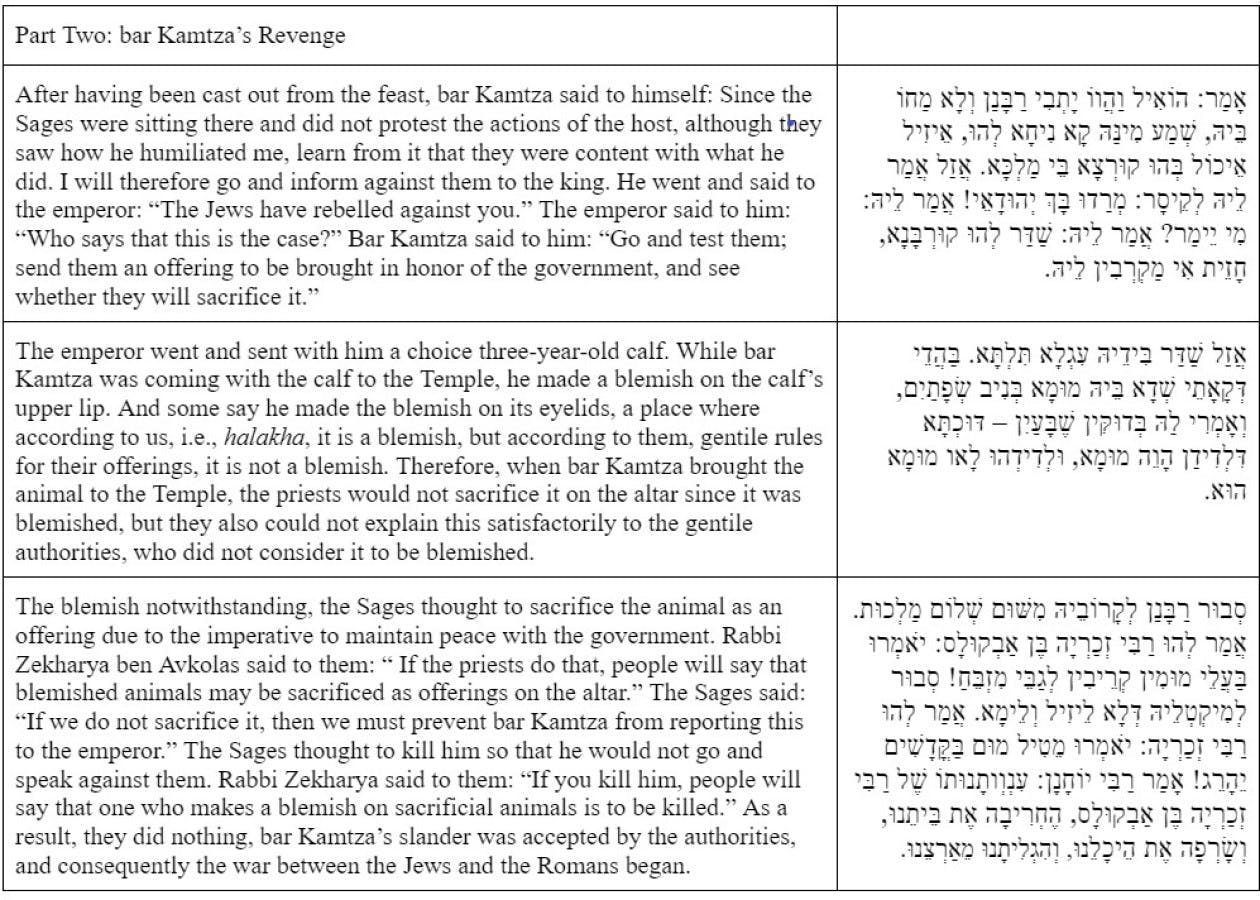
Resources for Deeper Understanding
The story of Kamtza and Bar Kamtza is often considered a prime example of sinat chinam (baseless hatred). The Sages, elsewhere (Yoma 9b), say that the destruction of the second Beit Hamikdash and the subsequent exile in which we still find ourselves today are a result of the Sinat Chinam between fellow Jews. This animated video from Rabbi David Fohrman, founder and lead scholar at Aleph Beta, uses the story above to offer a novel insight into what sinat chinam really means and how we can prevent it.
Looking for more?
We have hours of delightful videos and podcasts to enhance your Purim celebration this year.
Gemara #2: The Roman General and the Jewish Child
The Gemara in Gittin 56a continues the narrative following the incident, describing the events that occur when Nero Caesar was dispatched by the Romans to besiege Jerusalem. Below, you'll discover a concise summary, the complete text from the Gemara, and additional resources for a deeper exploration of this significant historical account.
Brief Summary of the Story
As mentioned earlier, the Romans, who governed the Land of Israel, were deeply angered when the animal they sent for sacrifice at the Beit Hamikdash was rejected by the Sages. In response, they dispatched their general, Nero, to attack Jerusalem. As Nero approached the city, he performed a test to determine his future success: he shot an arrow in all four directions, and each one landed within Jerusalem's walls. Taking this as an ominous sign, he sought further guidance from a Jewish schoolchild passing by. Nero asked the child which verse he had been studying in school. The child quoted from the Book of Ezekiel, where God vows vengeance upon Edom, the ancestors of the Romans, for their actions against Israel. Upon hearing this prophecy, Nero refused to lead the campaign against the Beit Hamikdash and Jerusalem. He renounced his position as a Roman general and converted to Judaism. According to the Gemara, Rabbi Meir, the renowned sage, was among his descendants.

Resources for Deeper Understanding
The story of Nero immediately follows that of Kamtza and Bar Kamtza in the Gemara, suggesting a connection between the two. What exactly ties these narratives together? How does Nero's decision to renounce his position relate to baseless hatred (sinat chinam)? In the concluding video of the Kamtza and Bar Kamtza series, Rabbi David Fohrman explores how this brief account offers insights into breaking the cycle of baseless hatred.
Have kids? Check out our new parent/teacher guide for this video to turn this into a Tisha B’Av that the whole family will remember.
Gemara #3: Marta’s Tragic Death
The Gemara continues with the story of Vespasian Caesar, who succeeded Nero and besieged Jerusalem, causing a severe famine. Within this context, the Gemara recounts the story of Marta, one of Jerusalem's wealthiest residents, who grappled with adapting to the constantly shifting 'new normal' during a tumultuous era. Her tragic tale resonates with the challenges we encounter in times of adversity.
Brief Summary
In their attack on Jerusalem and the Beit Hamikdash, the Romans laid siege to Jerusalem. As the food supply dwindled, Marta, one of Jerusalem’s most wealthy women, sent her servant to the market to get the fine flour she was accustomed to eating. The servant returned a short time later with the news that there was no more fine flour to be found anywhere in Jerusalem, but there was still white flour available. Marta agreed to purchase the lower-quality flour and sent the servant back to the market to buy it. In the meantime, the supply of white flour had all been purchased. The servant once again returned with the news and reported that there was still cheaper flour available. This process repeated itself a few more times until there was nothing left in the market. At this point, Marta, herself, went out to find something to satiate her hunger. All she found was dried-out dates whose juice had already been sucked out. After eating these dates, Marta died.
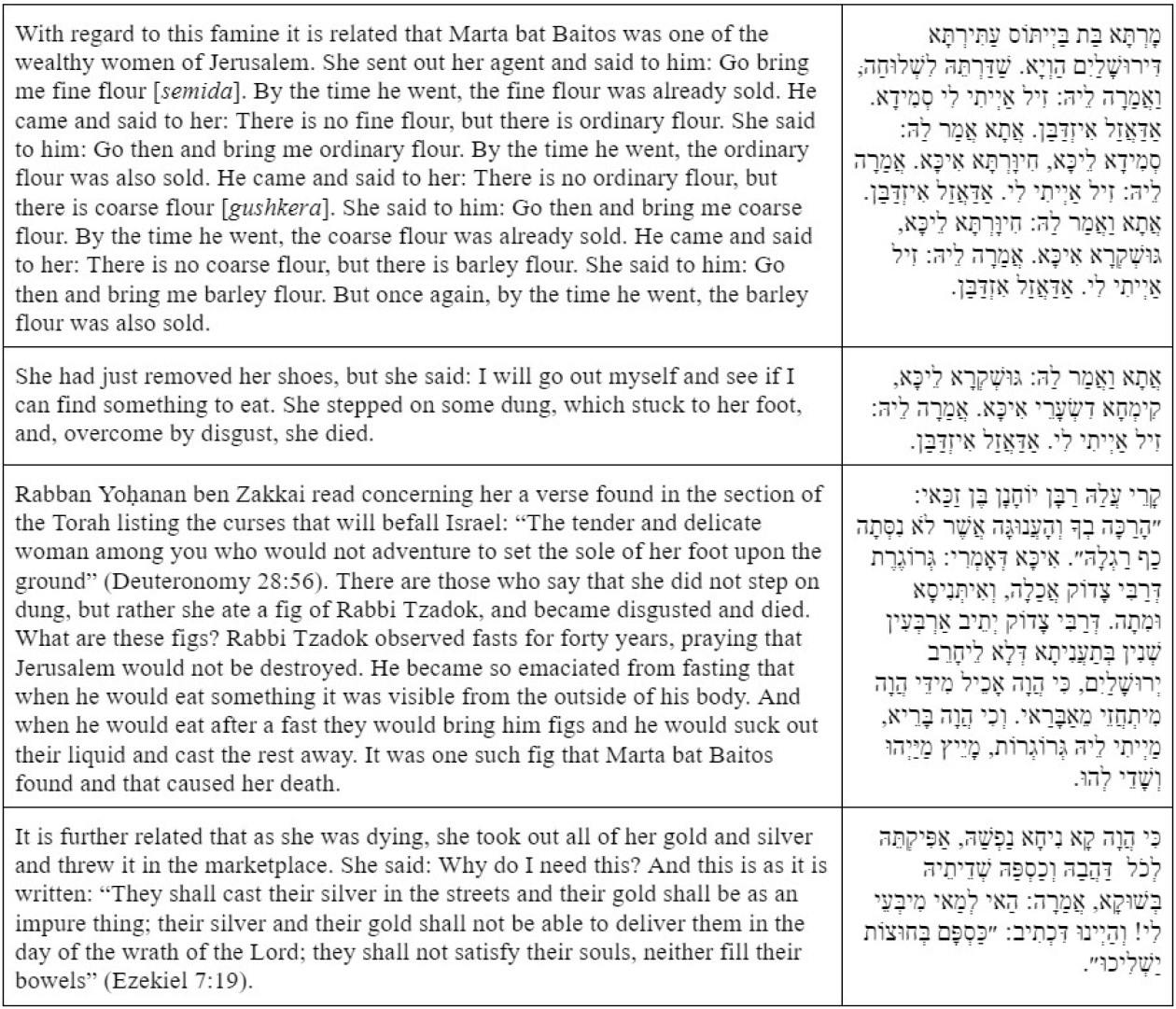
Resources for Deeper Understanding
When the entire world faced an unprecedented pandemic during COVID, we all struggled to adjust to a constantly changing reality. In episode three of the podcast titled "The New Normal" Rabbi David Fohrman and Imu Shalev dive into the Gemara’s story of Marta. They discuss the idea of faith in troubling times and explore lessons about coping with uncertainty, tragedy, and lack of control.
Gemara #4: R' Yochanan ben Zakkai saves Yavneh
Despite the loss of our land, our sovereignty, and our religious and cultural center, the Jewish people have defied all odds and survived for millennia. Rabbi Yochanan ben Zakkai laid the foundation for Jewish continuity after the churban Beit Hamikdash.
Brief Summary of the Story
Rabbi Yochanan ben Zakkai was the leading sage at the time of the destruction of the second temple. After failing to persuade the zealots, who were leading Jerusalem to starvation, Rabbi Yochanan devises a plan not to save Jerusalem, but a different city: Yavneh.
Rabbi Yochanan snuck out in a coffin and met up with the general Vespian, and promised him he would become king. When the guards came to inform Vespian that Rabbi Yochanan’s prediction came true, Vespasian wanted to thank Rabbi Yochanan who asked for three things in return: To spare the city of Yavneh, to keep alive the dynasty of Rabbi Gamliel, who would take over for Rabbi Yochanan as nasi, and to provide a doctor for the elderly Rabbi Tzadok, a remnant of the previous generation.
It is, in many ways, shocking that Rabbi Yochanan would ask for these things instead of sparing Jerusalem, but these requests ended up being the lifeboat for the Jewish people and especially the tradition of Torah study. Rabbi Gamliel would go on to build a prolific school in Yavneh and Jewish life would live on.
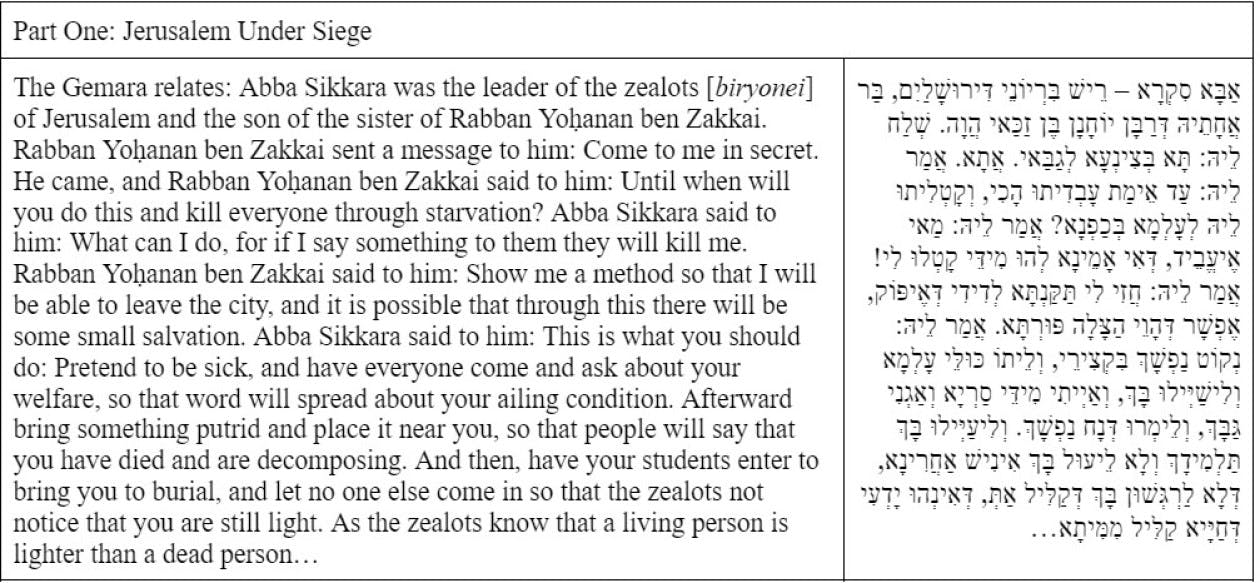
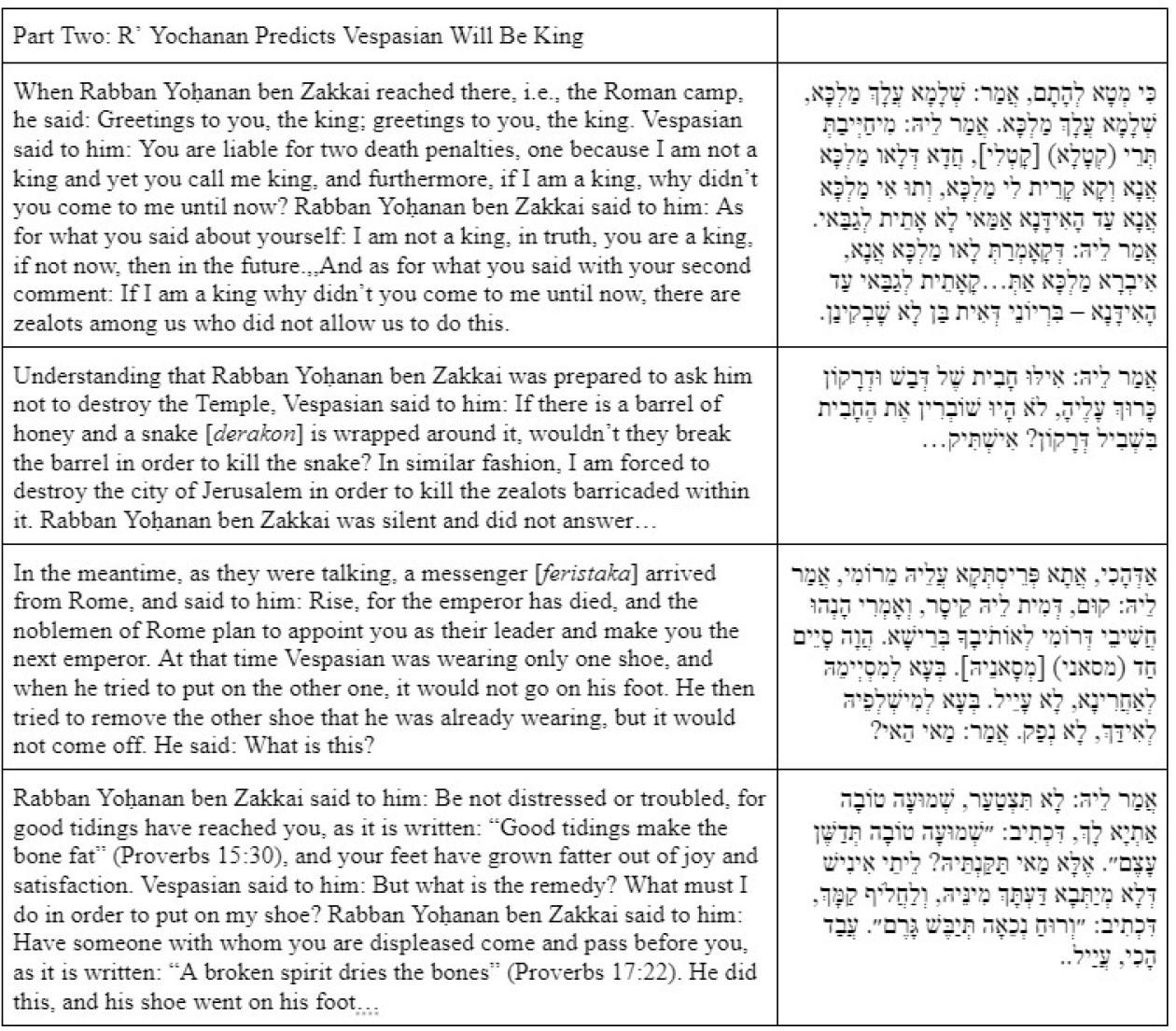
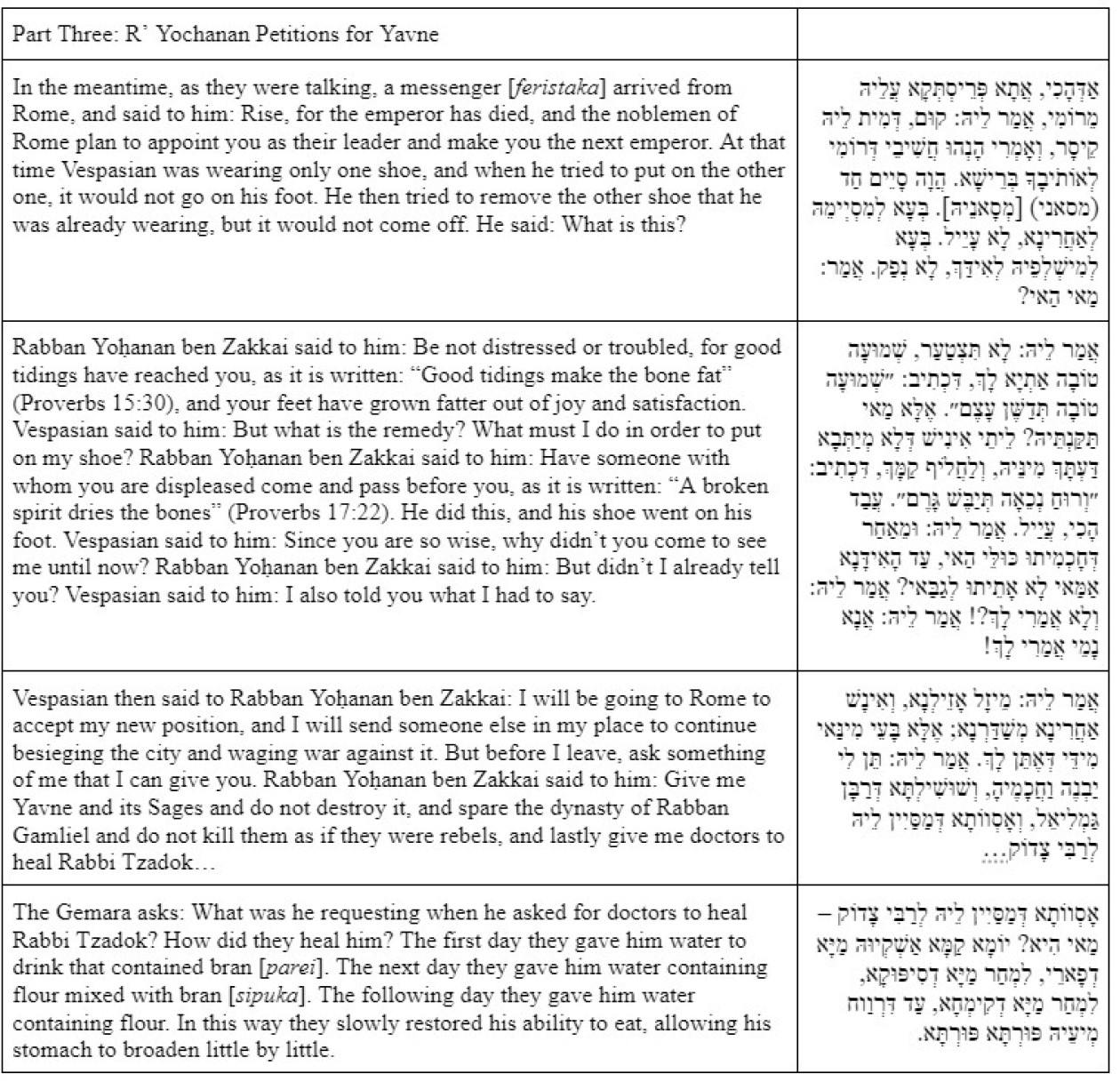
Resources for Deeper Understanding
The Jewish people were faced with an existential threat during the Romans’ attack and siege of Jerusalem. Rabbi Yochanan ben Zakkai’s requests were his strategy for combating and overcoming that threat. Why did he think that his three seemingly unrelated requests would be the recipe for the Jewish people to survive the destruction of the Beit Hamikdash? In this video, Rabbi David Fohrman, explores the story of Rabbi Yochanan ben Zakkai and the Sages of Yavneh, including one of their most famous debates, and provides magnificent insight into the persistence of Jewish survival.



